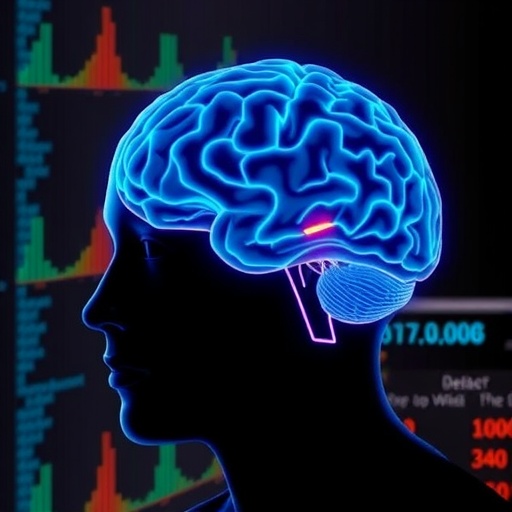In a groundbreaking advancement for psychiatric diagnostics, researchers have unveiled an innovative approach that harnesses electroencephalography (EEG) combined with explainable machine learning techniques to objectively identify biomarkers of obsessive-compulsive disorder (OCD). Traditionally, OCD diagnosis has relied heavily on clinical interviews and subjective assessments by trained psychiatrists, a process fraught with variability and potential bias. This emerging methodology promises to revolutionize the field by offering a quantifiable, data-driven path to diagnosing OCD with unprecedented accuracy and reproducibility.
The study, hosted in the esteemed journal BMC Psychiatry, challenges existing paradigms by integrating data from two independent sample sets comprising both OCD patients and healthy controls. By doing so, the researchers circumvent a common pitfall in machine learning applications—overfitting models to a single dataset that lack external validity. Dataset 1 included 35 OCD patients alongside 37 healthy controls, while Dataset 2 functioned as a stringent external validation set comprising 21 OCD patients and 21 controls. This multi-cohort strategy bolstered the robustness of their findings and demonstrated their approach’s generalizability across diverse populations.
Central to this research was the extraction and analysis of eight distinct EEG feature sets, each reflecting different aspects of neural oscillatory activity and connectivity. The innovative aspect of this study was their systematic comparison of these features within a unified machine learning framework to discern which neural signatures best differentiate OCD patients from healthy individuals. The inclusion of a broad spectrum of EEG features ensured a comprehensive evaluation, extending beyond prior studies that often limited themselves to singular types of EEG metrics.
Among the myriad features, phase-locking value (PLV) emerged as the standout biomarker, outperforming other measures across various machine learning classifiers. PLV quantifies the consistency of phase differences between pairs of EEG signals, essentially capturing the functional connectivity strength between different brain regions. This finding highlights the critical role of synchronized neural oscillations, especially long-range connectivity between frontal and parietal/occipital lobes, in the neuropathology of OCD.
The researchers meticulously employed six distinct machine learning algorithms to parse the EEG data, optimizing model configurations to achieve peak performance. Notably, the Light Gradient Boosting Machine (LightGBM) model distinguished itself by achieving an impressive classification accuracy of 86.6% on the training dataset and maintaining a robust 83.3% accuracy on the independent test set. This level of performance signifies a major leap in EEG-based diagnostics, signaling that complex brain disorders like OCD can indeed be discerned using non-invasive electrophysiological markers combined with advanced computational techniques.
Delving deeper into the explanatory mechanics of the classification model, the study utilized SHapley Additive exPlanations (SHAP), an interpretability tool that attributes prediction outcomes to individual features. SHAP analysis illuminated the pivotal role of specific frequency bands within the PLV data, namely alpha, delta, and theta bands. Connectivity measures such as alpha-band PLV between the frontal region F4 and parietal region P3, delta-band PLV between P3-O1 and F3-O1, as well as theta-band PLV spanning C3-T4, were identified as the most influential contributors shaping the model’s predictions.
These nuanced insights into frequency-specific connectivity patterns not only validate the neurobiological underpinnings of OCD but also provide a focused target for future neurotherapeutic interventions. The identification of altered functional connectivity in these discrete bands ties into prior neuroimaging research implicating dysregulated communication pathways in OCD, particularly between the frontal executive networks and posterior sensory cortices.
The implications of this study extend beyond diagnostics, offering a scalable framework for clinical implementation. By leveraging resting-state EEG — which is inexpensive, portable, and widely accessible — alongside machine learning, clinicians could soon benefit from objective, quantifiable metrics for OCD screening and monitoring. Such advancements are pivotal given the disorder’s chronic nature and variable treatment response, potentially enabling personalized interventions calibrated to an individual’s neurophysiological profile.
Furthermore, this research underscores the transformative power of explainable AI in psychiatry. By providing transparent, interpretable models rather than opaque ‘black boxes’, clinicians and patients alike can gain confidence in automated diagnostic aids, fostering greater acceptance and integration within healthcare systems. The transparency inherent in SHAP analysis bridges the gap between computational efficiency and clinical trustworthiness.
Despite the promising results, the authors acknowledge limitations, including the moderate sample sizes and the need for longitudinal studies to assess the stability of PLV biomarkers over time and in response to treatment. Future research expanding cohorts, investigating additional neural features, and integrating multimodal data such as functional MRI could further enhance classification accuracy and deepen understanding of OCD’s neurophysiology.
In summary, this pioneering research melds advanced neurophysiological measurement with cutting-edge machine learning to illuminate objective biomarkers of obsessive-compulsive disorder. By identifying phase-locking value as a key EEG signature with high classification fidelity, the study lays a foundation for transformative clinical tools that could revolutionize OCD diagnosis and management worldwide. As the field of psychiatric neuroscience embraces AI-driven methodologies, such integrative approaches promise a new era of precision mental health care, grounded in rigorous, explainable science.
Subject of Research: Identification of objective resting-state EEG biomarkers for obsessive-compulsive disorder using explainable machine learning techniques.
Article Title: Exploring potential resting-state EEG biomarkers of obsessive-compulsive disorder based on explainable machine learning analysis of independent training and test samples
Article References:
Zhao, Z., Wang, J., Niu, Y. et al. Exploring potential resting-state EEG biomarkers of obsessive-compulsive disorder based on explainable machine learning analysis of independent training and test samples. BMC Psychiatry (2025). https://doi.org/10.1186/s12888-025-07583-9
Image Credits: AI Generated




